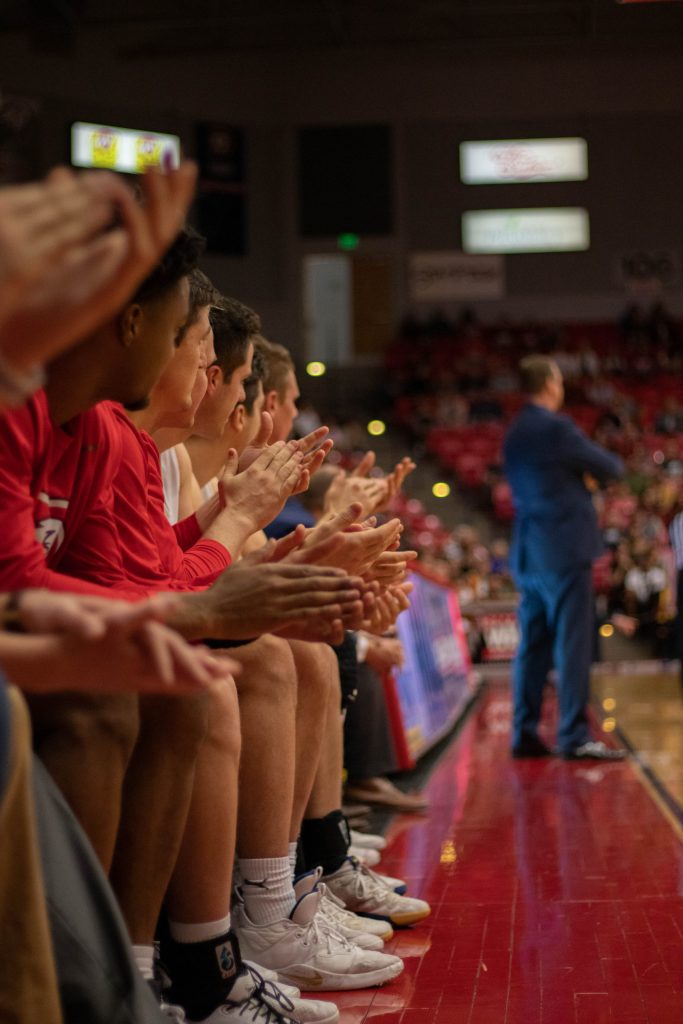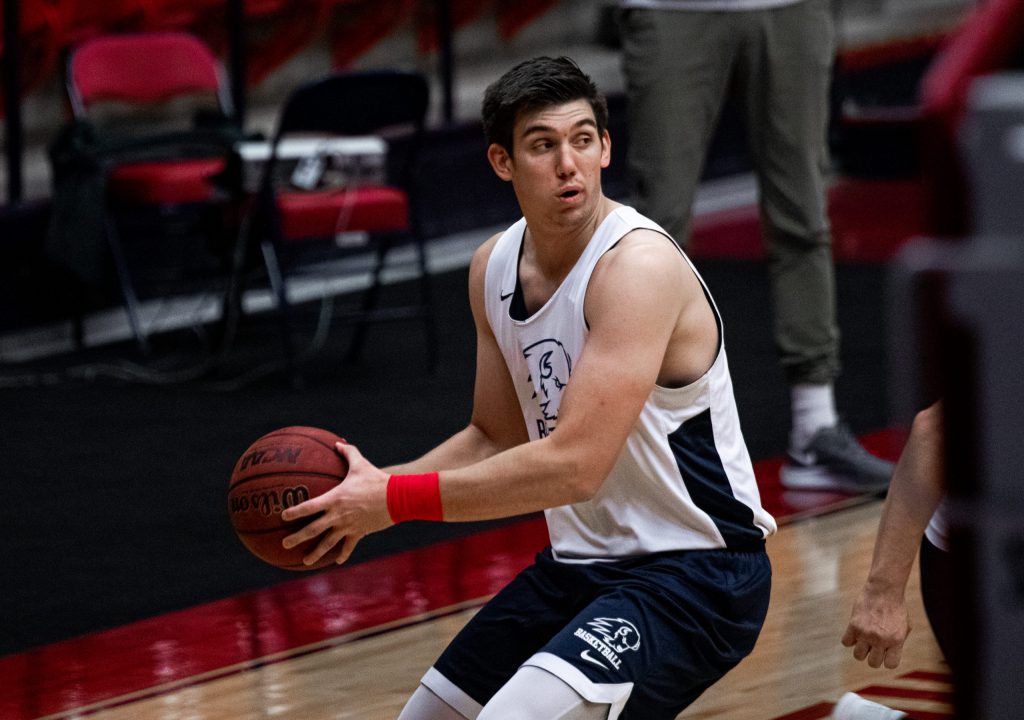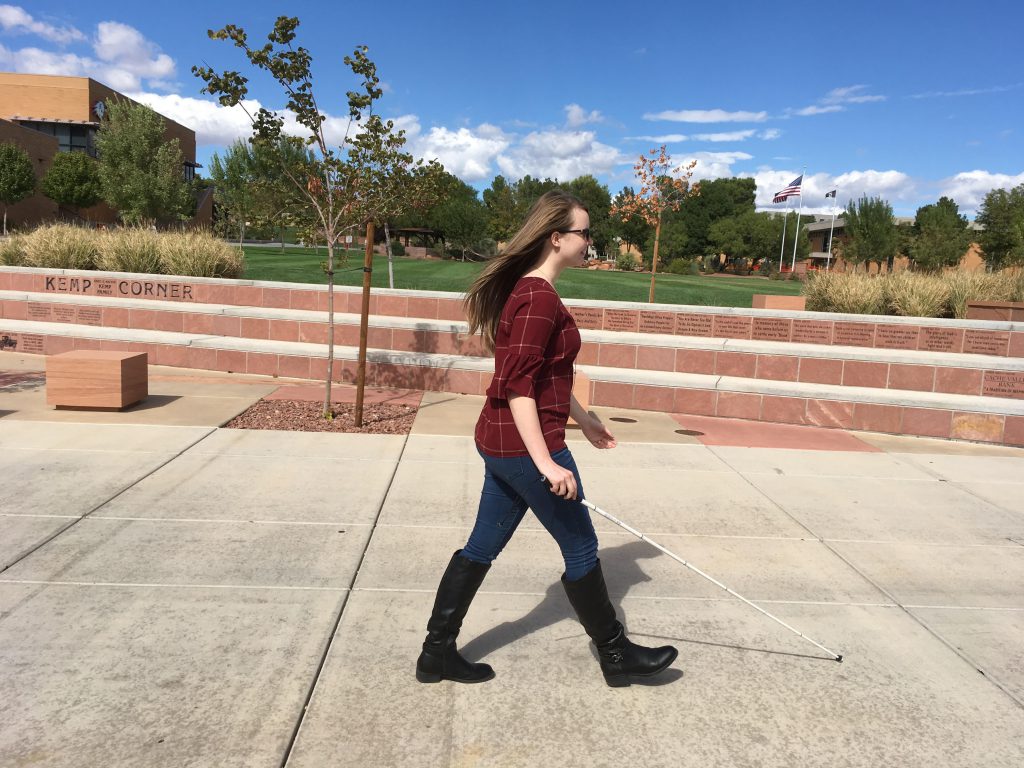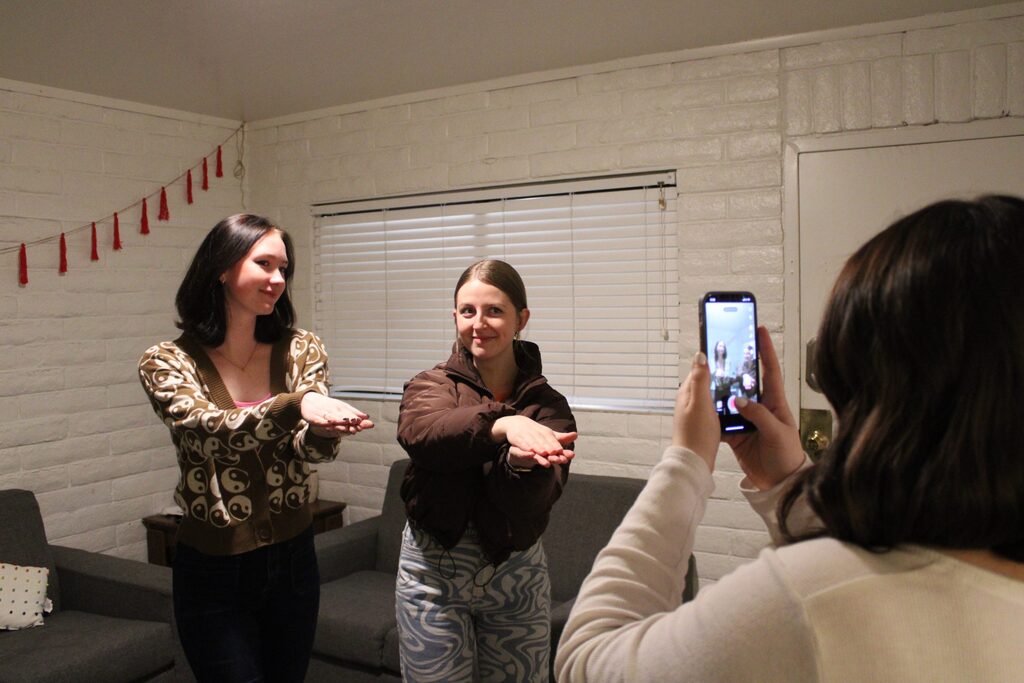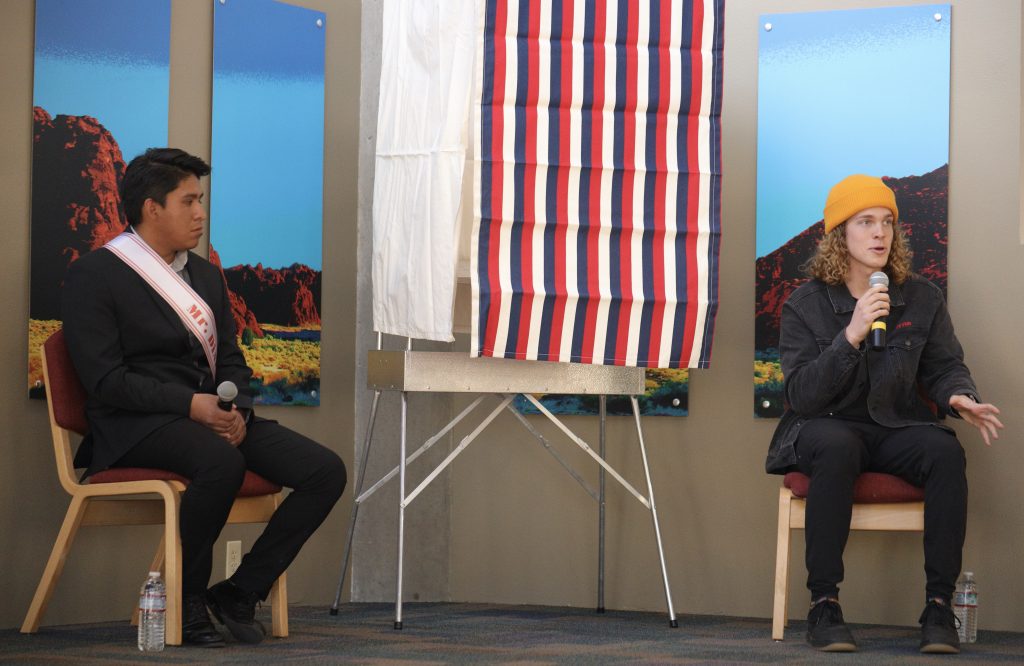With the fear of an estimated 10% budget cut, students, faculty and staff gathered in the Gardner Student Center Jan. 16 at 1 p.m. to discuss the potential effects this could have on Utah Tech University.
The Institute of Politics and Public Affairs hosted the event to create conversation about the upcoming bills proposed for the 2025 Utah State Legislature that affect higher education. With the goal of informing the audience, a discussion was held amongst a panel of speakers. Led by moderator Vince Brown, director of the Institute of Politics and Public Affairs, the panel included:
- Stephen Lee, Dean of the College of Humanities and Social Sciences
- Julie Chew, Faculty Senate president
- Geoff Allen, assistant professor of political science
- Bella Estes, student body president
- Brad Ashay, president of the American Federation of Teachers of Utah
Brown said the panel was selected to give diverse thoughts and opinions regarding the upcoming bills, specifically HB 265, and the effects they could have.
“There is a lot of concern amongst the faculty, staff and students about what is going to happen in the legislature this year in terms of bills coming down that affect higher education, including possible cuts to funding,” Brown said. “At the IOP, our job is just simply to try to provide as much information as we can, and in this case, to allay concerns or to make people aware so that they’re active and involved.”
The Higher Education Strategic Reinvestment Bill, HB 265, is sponsored by Republican Representative Karen Peterson and is discussed in this year’s legislative. The legislature is in the process of removing $60 million from institutions statewide to be placed in a reinvestment fund, and Utah Tech’s estimated portion would be around $2.5 million.
Thus, the bill will “require each degree-granting institution to create a strategic reinvestment plan to reallocate funding from certain programs and divisions of the institution to certain programs and divisions that merit additional investment.”
The effective date for the bill is May 7, 2025 if passed, with universities having three years to implement the investment plan.
For many in attendance, the event was a way to become more informed about the potential effects on the university in the future. Kyle Killebrew, instructor of English, attended the event to learn more about the upcoming bills that could affect universities in Utah, specifically information about reallocation and budget cuts.
“Theoretically, if some of the proposed reallocations end up going through, it could negatively impact some of the important programs here at Utah Tech, especially if anything goes through that impacts faculty lines,” Killebrew said.
Similarly, Shauna Wight, assistant professor of English, said she is concerned about the impacts the bills could have on the students’ offerings, like the courses they can take or are required to take.
Daniel Klingler, a junior English major from South Jordan, was among the students who attended the event. Klinger said they attended to learn more about how the bills would potentially affect the university, fellow students and themself. However, a big concern of Klinger’s is the effect these bills could have on the College of Humanities and Social Sciences department.
“I just don’t see them [CHASS] getting as much funding, or they’re going to get downsized to such a degree we’ll lose a lot of degree programs, things like my degree, creative writing,” Klinger said.
With these potential cuts to certain programs, Klinger is concerned about the skills students will lose by not having these classes. He said these programs encourage people to create cultural impact.
“If we lose the ability to learn these skills to create change, then humanity stalls,” Klinger said. “People aren’t going to be able to fight for what they believe in if they don’t have the words, language or understanding to do so.”
Dean Lee discussed amongst the panel the importance of CHASS and the skills it can help students develop. Some of the skills mentioned in the discussion were critical thinking, communication and innovation. He said it’s important to be able to look at issues from multiple perspectives and challenge ourselves environmentally, which ultimately prepares you for life after college.
Lee said, “It is that we’re preparing you for life-ready and citizen-ready; that you are indeed a contributor to society and an informed citizen because that’s where your liberal arts or humanities and social science training will come to bear every day.”
An additional discussion that arose was the potential cutback on the credits required for general education. Part of this would mean that students could get a degree in three years instead of four. With a shorter time at the university, it would be a cutback on general education and elective classes. Chew discussed with the panel how these classes help make a more rounded individual.
“I think you learn grit and develop resiliency through taking classes that make you critically think, make you collaborate, make you examine values and beliefs and how they fit in with that, and develop an ethically principled adult who works in the world effectively,” Chew said.
The Utah State Legislature session begins on Jan. 21 and will go until March 7. If interested in taking action, Utah Tech Day on the Hill is Jan. 29, which is an opportunity for anyone to voice concerns at the Utah State Capitol. Moreover, if you want your voice to be heard, you can also email Governor Spencer Cox regarding concerns about the bills.
“It starts here, but it doesn’t end with us,” Klinger said. “They’re going to push these studies out without realizing the impact if we don’t stand up and fight back.”





